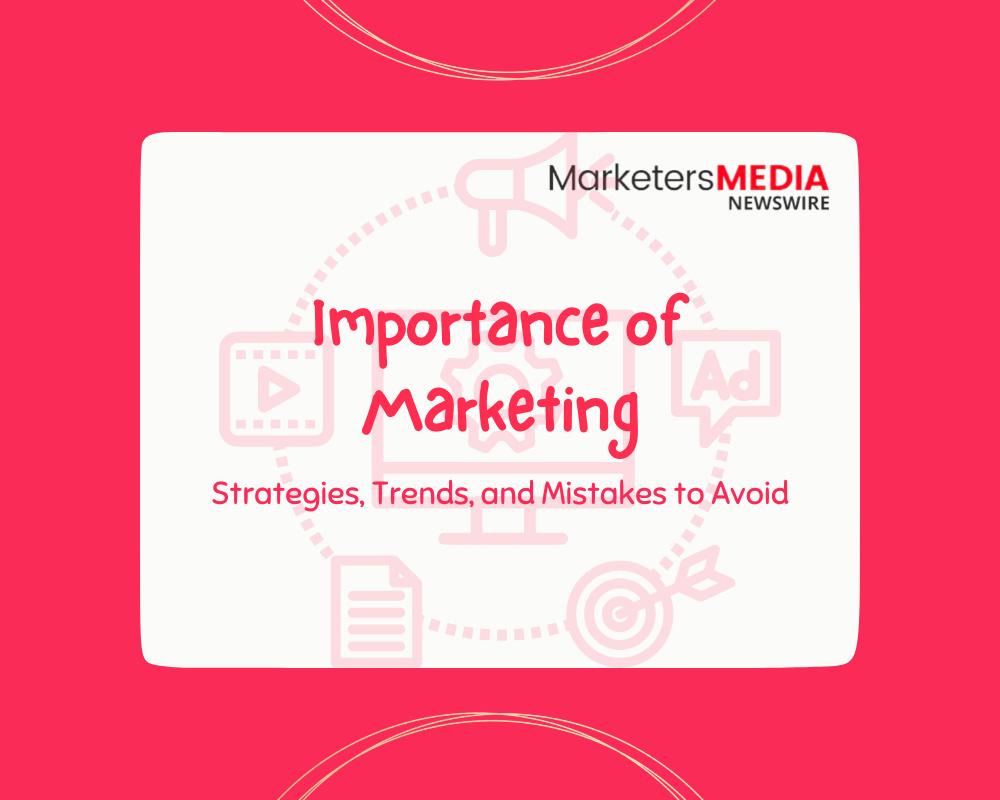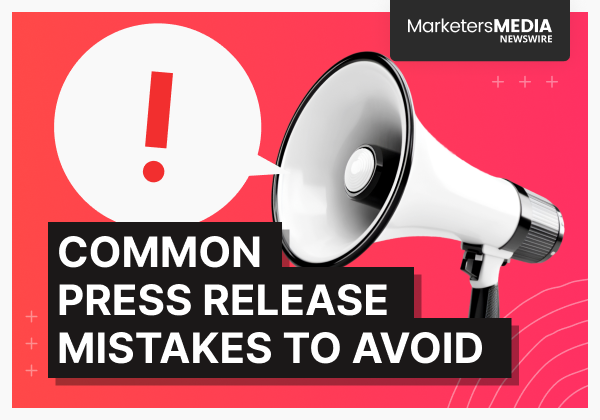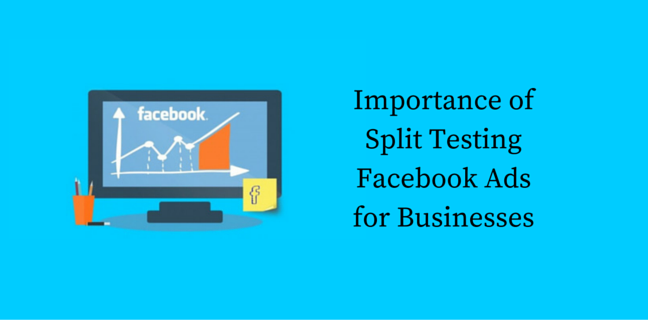Why does marketing, crucial for a company's reputation and the promotion of goods, hold the throne in the business and industry realm? Imagine a world where your favorite goods or life-changing services never reached you because their stories weren't told through an effective marketing strategy, impacting the industry's overall customer experience. That's a glimpse into a universe without effective marketing. In today's fast-paced, digital-first environment, understanding the importance of marketing is not just beneficial; it’s essential for any company aiming to thrive rather than merely survive, helping to build reputation and service quality. From building brand awareness for a certain product or service to driving sales and fostering customer loyalty, marketing weaves through every aspect of consumer interaction in various business sectors like magic threads binding the company's market tapestry together. Let’s dive deep into why mastering this marketing strategy art is crucial for helping a company stand out in today's saturated marketplace.
Marketing Significance

Business Growth
Marketing is the engine behind business growth. It turns the wheels of operations to scale up. Businesses rely on marketing to help drive revenue, price, and profit increases for the company. This is crucial for survival in competitive markets.
Through effective marketing strategies, companies can expand their market share. They reach more customers and enter new markets. This expansion is vital for long-term success.
Role and Purpose
:max_bytes(150000):strip_icc()/brandawareness.asp_FINAL-4efe7fc441e14e0aae9dbacbe2616887.png)
The role of marketing cannot be overstated. It's how businesses communicate the value of their offerings. Without marketing, even the best products might go unnoticed.
Marketing builds brand awareness. It makes a company recognizable among its competitors. Brand awareness leads to trust and loyalty from customers.
It also facilitates customer engagement through various channels like social media, email, or events as part of the company's marketing strategy. Engagement keeps customers interested and involved with the brand.
Strategic Importance
Aligning marketing efforts with company business goals ensures that every campaign contributes to overall success. This alignment helps businesses focus on what matters most.
Identifying competitive advantages through marketing analysis gives companies an edge over their rivals. It allows the company to highlight unique features or services it offers that others don't.
Lastly, strategic planning guides company resource allocation effectively across different campaigns or initiatives. This ensures optimal use of budgets for maximum impact.
Diverse Strategies

Offline Channels
Offline channels like print, TV, and direct mail still hold a significant place in the marketing mix. They reach audiences who may not be online frequently. This includes older generations or those in rural areas without reliable internet access.
Print advertising can create a tangible connection with consumers. People often trust what they can touch and see in newspapers or magazines more than digital ads. TV commercials offer wide exposure. They capture attention through storytelling that's hard to ignore when sitting in front of the screen.
Direct mail stands out for its personal touch. It lands directly into the hands of your target audience, making them feel specially selected.
These offline strategies complement online ones beautifully. They bridge gaps where digital reaches its limits.
Online Channels
The rise of digital marketing has transformed how businesses connect with their audience. Online channels include social media, email campaigns, and websites.
Social media platforms allow brands to engage with customers directly. This interaction fosters community around products or services. Email marketing offers personalized communication at scale. Websites serve as a hub for all information about a company.
Online channels provide measurable analytics too. Businesses track everything from click-through rates to engagement metrics. This data helps refine strategies over time for better results.
A 2023 Multichannel Marketing Report found that businesses employing a multichannel approach see a 35% higher customer retention rate compared to those using a single-channel strategy. This highlights the importance of integrating both online and offline channels to enhance customer experience and loyalty.
Multichannel Plans
Integrating both offline and online channels leads to multichannel plans. These plans enhance customer experience by providing multiple ways for them to interact with your brand.
A multichannel approach increases touchpoints with consumers across different stages of their journey. It ensures they encounter your message whether they're flipping through a magazine or scrolling on Instagram.
Marketing Elements
4 P's Analysis - Product, Price, Place, Promotion

Understanding the 4 P's is crucial in shaping effective marketing strategies. These elements—Product, Price, Place, and Promotion—guide decisions that align with market demands.
Firstly, the product needs to meet consumer expectations. It should solve a problem or fulfill a need. Next comes pricing it right. The price must reflect the value while being competitive. Where the product is sold (place) also matters greatly; it needs to be accessible to your target audience. Lastly, promotions play a vital role in making potential customers aware of your product and persuading them to make a purchase.
These components work together like cogs in a machine. For instance, if you're selling an eco-friendly water bottle, not only does its design matter but so does setting a price that reflects its sustainability values without alienating cost-conscious consumers. Selling it online or in stores specializing in eco-products ensures it reaches those most interested while promotions can highlight its unique benefits over conventional bottles.
Value Proposition
A strong value proposition sets you apart from competitors and draws customers towards your brand.
It articulates why someone should buy from you instead of elsewhere by highlighting unique benefits only available through your offerings. This clarity helps attract those who are most likely to become loyal customers because they see direct relevance in what you're offering.
For example, if your software offers innovative features that simplify complex tasks for small businesses at an affordable rate compared to major brands—that’s compelling! Such differentiation makes your product stand out and can significantly influence buying decisions by directly addressing specific customer needs and preferences.
Target Market

Identifying who exactly constitutes your target market is pivotal for focused marketing efforts.
This involves understanding demographics such as age groupings or economic statuses, but also psychographics, including interests or lifestyle choices, which help pinpoint who will benefit most from what you’re offering.
By focusing on this defined group rather than trying to appeal broadly across all segments, it leads not just toward more efficient use of resources but also improves relevancy within campaigns, too; messaging becomes tailored, thereby resonating strongly with intended audiences.
For instance, targeting young professionals for premium coffee subscriptions emphasizes convenience and quality, which speaks directly into their daily lives, enhancing chances for engagement over generic advertisements aimed at everyone.
Effective Strategies
Branding Leverage

Branding is more than just a logo or slogan. It's the heart of your marketing strategy. A strong brand strengthens your market position. It makes you stand out in a crowded marketplace.
Customers trust familiar brands. They're also loyal to them. This loyalty turns into repeat business, which is gold in any industry.
A well-established brand enhances the perceived value of your products or services. People are willing to pay more for something they believe is better quality or offers more prestige.
In short, effective branding:
- Makes you memorable.
- Builds customer loyalty and trust.
- Increases the value customers place on what you offer.
Consumer Needs
Understanding consumer needs guides product development and marketing messages. If you know what your customers want, you can tailor your offerings accordingly.
This understanding influences purchase decisions significantly. When consumers feel heard and understood, they're more likely to buy from you.
Personalized marketing speaks directly to individual needs and preferences. It's powerful because it feels personal and relevant.
To connect with consumers:
- Listen to their feedback.
- Use data analytics for insights into their behavior.
- Tailor messages that resonate with their specific desires.
Agile Campaigns
Markets change rapidly today. An agile approach allows businesses to respond quickly to these changes.
Agile campaigns involve iterative testing and optimization based on real-time feedback. This method ensures that strategies remain relevant and effective over time.
Adapting strategies based on current trends keeps companies competitive:
- Monitor market conditions regularly.
- Test different approaches frequently. 3 . Adjust tactics as necessary based on performance data.
Agile methodologies ensure that marketing efforts are always fine-tuned for maximum impact.
Performance Measurement

Success Metrics
Understanding the importance of marketing involves more than just launching campaigns. It's about measuring their impact. Success metrics serve this purpose well. They track performance through Key Performance Indicators (KPIs) like engagement rates.
These metrics offer a clear view of how effective your marketing strategies are. For instance, if your social media campaign has high engagement rates, it means you're reaching your audience effectively. This data is crucial for informing future decision-making processes. By analyzing what works and what doesn't, marketers can refine their approaches to achieve better results.
ROI Evaluation
Another critical aspect is ROI evaluation. This process assesses the financial returns on marketing investments. It answers a fundamental question: "Is the money spent on marketing generating enough profit?"
This evaluation justifies budget allocations by highlighting which activities yield the best returns. For example, if digital ads bring in more revenue compared to traditional billboards, businesses might allocate more funds to digital platforms.
Moreover, ROI evaluation helps prioritize high-yield activities over less profitable ones. Companies can thus focus their resources where they see real value, ensuring that every dollar spent contributes positively to overall growth.
Conversion Rates
Lastly, understanding conversion rates is key to grasping the full importance of marketing efforts. Conversion rates indicate how well your sales funnel turns prospects into customers. A high conversion rate suggests that your targeting and messaging are on point; you’re not just attracting visitors but converting them into buyers.
Improving these rates often requires tweaking various elements of your strategy—from refining ad copy to optimizing landing pages. It’s a continuous process aimed at making sure potential customers don’t just visit but take action.
Marketing Management
Objectives and Strategies
Marketing management begins with setting clear goals. These are not just any targets but ones that align perfectly with the business's broader objectives. For example, if a company aims to increase its market share, marketing strategies might focus on enhancing brand visibility or diversifying product lines.
To achieve these objectives efficiently, businesses outline specific methods or tactics. This could involve a mix of promotion, sales activities, and distribution adjustments to ensure they reach their target audience effectively. It’s like plotting a course on a map; knowing where you want to go is one thing but figuring out how to get there is another ball game altogether.
Aligning tactics with the overall business strategy ensures that every marketing effort contributes directly to the company's success. If performance measurement in the previous section showed areas needing improvement, this alignment helps in tweaking marketing efforts for better results.
Product Development
At the heart of any successful marketing initiative lies a product that meets market demand. This involves conducting thorough market research to understand what consumers need and then developing products that meet those needs.
Incorporating feedback is crucial for continuous improvement. Imagine releasing a new smartphone model: customer reviews about battery life or camera quality can guide improvements in future versions. This process ensures products evolve based on actual user experiences.
Aligning offerings with consumer expectations bridges gaps between what businesses think customers want and what they actually desire. A mismatch here can lead to wasted resources and missed opportunities.
Consumer-Brand Gap
Identifying discrepancies between brand perception and reality is vital for maintaining authenticity. Sometimes businesses see themselves one way while consumers have an entirely different view. Recognizing this gap allows companies to adjust their communication strategies accordingly.
Aiming to close this gap through targeted communication enhances brand trust among consumers. It could involve clearer messaging about product benefits or more transparent practices that reflect true brand values.
Enhancing brand authenticity builds deeper connections with customers leading them not only purchase products but also become loyal advocates for your brand over time.
Digital Evolution
SEO Practices

SEO, or Search Engine Optimization, is a crucial part of digital marketing. It makes websites visible to search engines. This means more people can find the website when they search for something.
The process targets keywords that are relevant to the website's content. For example, if you sell handmade soap, you would want to rank high for searches like "natural handmade soap" or "organic bath products". By doing this, your site appears higher in search results.
This strategy drives organic traffic without paying for ads. More visitors come to your site through Google or Bing. This increases the chances of making sales or getting subscribers.
In a 2020 study by seoClarity, it was found that Google's Search Engine Results Pages (SERPs) feature 810 unique elements, with 161 of these features appearing in searches for more than 0.2% of keywords. This highlights the complexity and richness of Google's search landscape, emphasizing the importance of optimizing for a wide array of SERP features to enhance visibility.
Content Authenticity
Authentic content builds trust with your audience. People prefer brands that are honest and genuine in their messaging. It feels more relatable and trustworthy.
Stories connect with readers on a personal level. Sharing real customer experiences or behind-the-scenes looks into your business can engage your audience more effectively than just stating facts about products.
Avoiding misleading information is key to maintaining credibility online. If consumers catch one lie, they might not trust anything else you say. Keeping all information accurate and transparent helps build a loyal following over time.
Chatbots Utilization
Chatbots provide instant responses to customer inquiries any time of day or night. This means someone visiting your site at 3 AM gets answers right away without waiting for business hours.
They also create seamless user experiences by guiding visitors through the website efficiently—helping them find what they're looking for quickly and easily.
Chatbots gather important data from interactions with visitors—like common questions or issues customers face—that can be invaluable in improving products and services based on actual consumer needs.
Common Mistakes
Quality over Quantity
In the realm of marketing, it's easy to get caught up in numbers. More posts, more ads, more emails. However, this approach often misses the mark on what truly matters: impact and value.
Firstly, focusing on creating impactful content means you're aiming for resonance rather than reach. It's about making sure each piece of content serves a purpose and adds value to your audience's life. This could mean crafting articles that solve problems or videos that entertain but also inform.
Secondly, prioritizing user value over volume helps build stronger relationships with your audience. People start seeing your brand as a source of reliable information and solutions. This trust is crucial in converting followers into loyal customers.
Finally, this strategy boosts brand reputation and loyalty significantly. When people know they can expect quality from you, they are not just more likely to return; they're also more inclined to recommend you to others.
Avoiding Pitfalls
Understanding common marketing mistakes is key to avoiding them. Recognizing these pitfalls early can save time, resources, and protect your brand’s image.
One widespread mistake is neglecting customer feedback. Engaging with your audience shows that their opinions matter and provides invaluable insights into improving strategies.
Another error marketers make is failing to adapt their strategies based on performance data. What worked yesterday may not work today due to changes in consumer behavior or market conditions.
To prevent these errors:
- Implement proactive measures such as regular audits of marketing strategies.
- Continuously evaluate what works through analytics tools.
These steps ensure that your marketing efforts remain effective and relevant.
Future Trends
Short-Form Videos
Short-form videos have taken the digital world by storm. They grab attention fast with their engaging content. Platforms like TikTok and Instagram Reels are at the forefront of this trend. Here, creativity knows no bounds.
These platforms encourage users to share clips that might go viral. This leads to massive interaction among viewers. Brands can leverage this by creating captivating content that resonates with their audience.
C2B and C2C Dynamics
The importance of marketing is also evident in consumer-driven trends such as C2B (Consumer-to-Business) and C2C (Consumer-to-Consumer). These dynamics highlight how consumers now influence brands more than ever before.
In a C2B model, customers offer value to businesses through feedback or participation in product development. Meanwhile, the C2C market thrives on peer-to-peer exchanges, offering a platform for individuals to sell directly to each other.
Both models adapt well in today's digital economy where roles are constantly evolving.
Digital Landscape Adaptation
Keeping pace with technology is crucial for staying relevant in marketing. Innovations offer competitive advantages if embraced correctly.
Adjusting strategies according to new consumer behaviors is essential. As technology evolves, so do customer expectations and behaviors.
Summary
Marketing isn't just a piece of the business puzzle; it's the lifeblood that pumps energy into your brand, helping it grow and thrive. From understanding its significance, diving into diverse strategies, and unraveling the digital evolution, to learning from common mistakes and peeking into future trends, we've covered the A to Z of marketing. It's clear that mastering marketing is not just about throwing ideas into the void but about crafting strategies that resonate with your audience, measuring their impact, and constantly adapting to the digital landscape.
Now's your time to shine. Take these insights, avoid those pitfalls, and leap into the future with strategies that set you apart. Remember, the world of marketing is ever-evolving—stay curious, stay adaptable, and most importantly, stay ahead of the curve. Ready to take your marketing game to the next level? Let's make some waves together.
Frequently Asked Questions
What is the importance of marketing for businesses?
Marketing is like your business's megaphone. It helps spread the word about your products or services, engages customers, and boosts sales. Without it, even the best products might go unnoticed.
How do diverse strategies enhance marketing efforts?
Think of diverse strategies as a Swiss Army knife for marketers. They allow you to tackle different challenges and reach various audiences effectively. This adaptability can significantly improve your marketing game.
Can you list some essential elements of effective marketing?
Sure! Effective marketing boils down to understanding your audience, clear messaging, consistent branding, and a mix of digital and traditional tactics. It's like crafting a perfect recipe that appeals to everyone at the dinner table.
Why is measuring performance crucial in marketing?
Measuring performance in marketing is like having a fitness tracker for your business. It shows how well (or not) your campaigns are doing, helping you tweak them for better results over time.
What does good marketing management involve?
Good marketing management involves planning strategically, executing creatively, and adjusting dynamically. Think of it as being the conductor of an orchestra—ensuring every section plays in harmony to create beautiful music (a.k.a., successful campaigns).
How has digital evolution changed marketing?
Digital evolution has transformed marketing from billboard ads into engaging online experiences—it’s like going from sending letters to instant messaging. Now businesses can reach people anywhere at any time with just a few clicks.
What are common mistakes to avoid in marketing?
One common mistake is speaking AT your audience instead of WITH them—like giving a lecture instead of having a conversation. Another no-no? Ignoring data; it’s akin to navigating without a map.
Free Press Release Template
Tell us where to send your PDF:







